Patty Yates uses art to process complex emotions of “Black History in America” class
Spring 2021
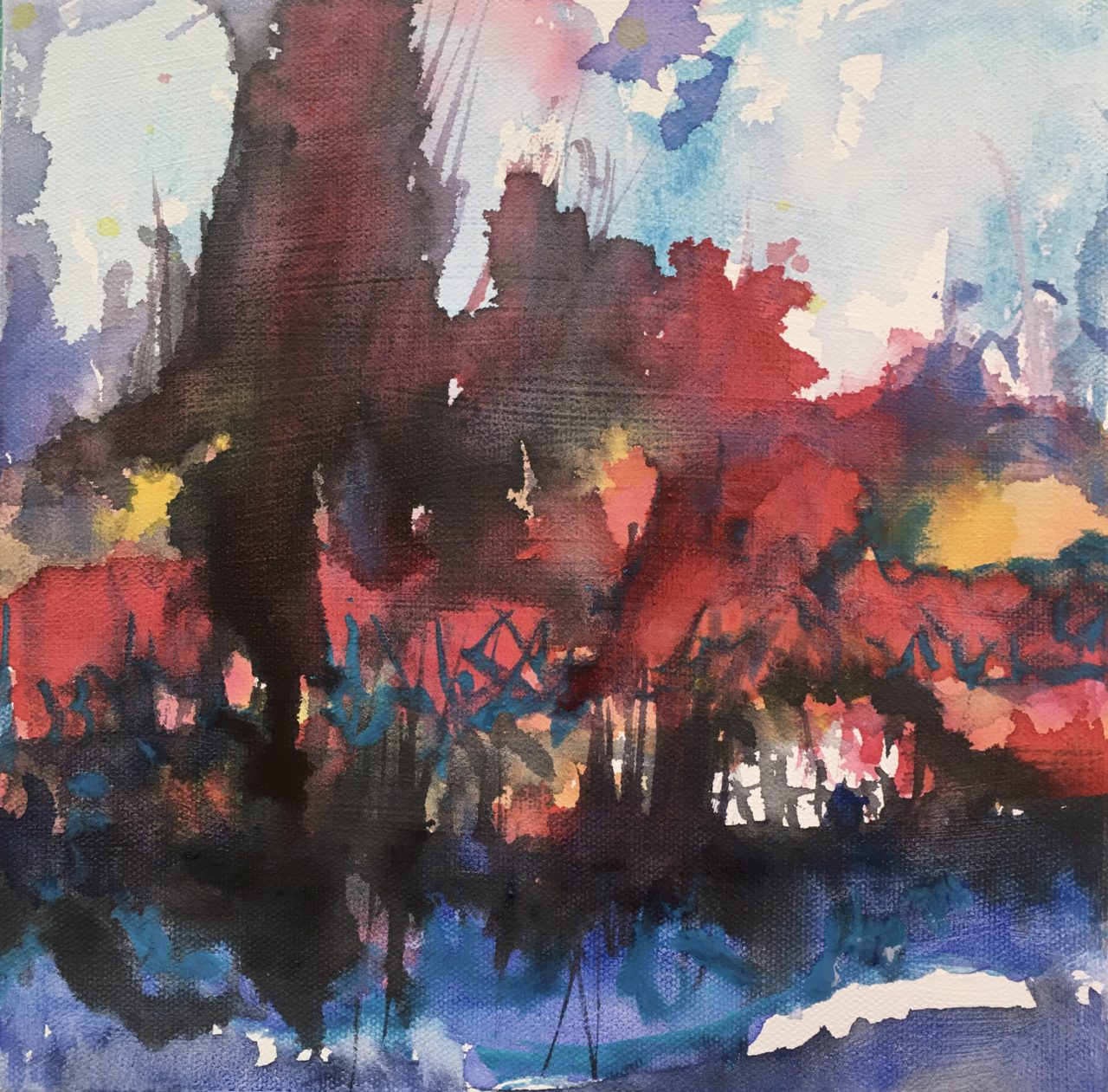
As a kid, Patty Yates was constantly getting in trouble for doodling during class. But there was a method to her motion. “I learn better if my hands are busy,” Yates says. “I had trouble all through school. I was dyslexic—which wasn’t a word back then—and doodling made that learning disability easier to manage. I’d draw all over my college notebooks. I got in trouble, but I remembered what I learned if I was drawing, so it was worth it.”
Now (and for many years) a professional artist, Yates still processes information best if she’s engaged in a right-brain pursuit like sketching or painting. And recently, while participating in Methow Valley historian Bill Hottell’s “Black History in America” class, Yates is finding the strategy to not only help her retain information, but also to process the complex emotions she experiences in each session.
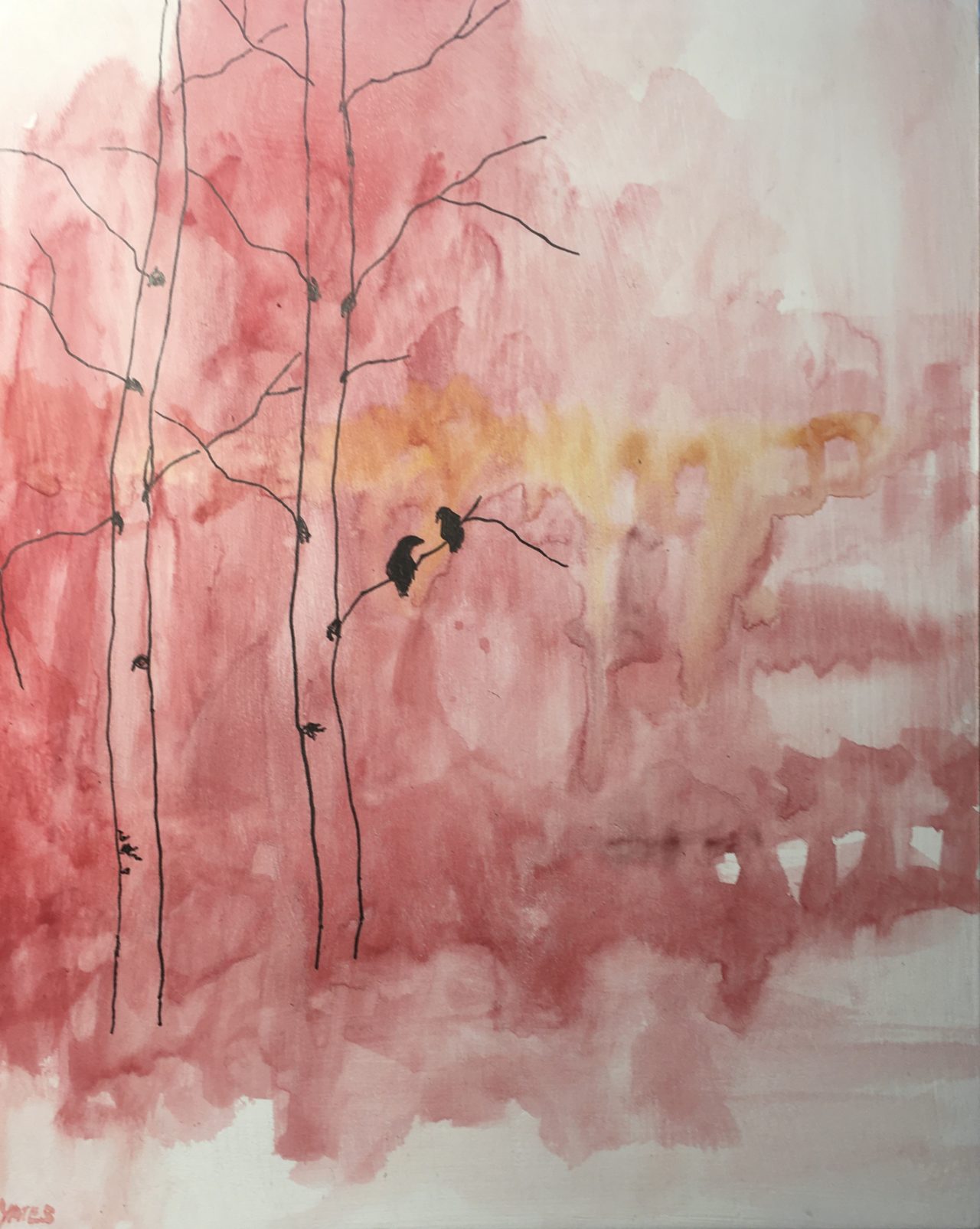
“The first day Bill started talking, I was blown away,” Yates says. “He started with the insurrection at the Capitol on January 6th, then went back to Jim Crow laws, then back to the mass slaughter of Black people. It was so emotional for me, right away.”
Yates happened to have some canvases prepped for paintings she is working on for an upcoming show at Confluence Gallery (“Corvid”—an exhibit of ravens, crows, magpies, and jays). As she struggled to contain her emotions while Hottell spoke, her eye landed on these blank backdrops. “I knew I needed to listen to what Bill was saying in order to get control of myself. So I started painting, to maintain my focus.”
What Yates painted was black. But gradually, she says, she began painting what she could see from her studio windows: little aspens, Russian Olive trees, some sun, some shadows. “There was beauty all around me, and I painted it as I listened to the horrors of the way we’ve treated Black people. It was heavy—knock-your-socks-off heavy,” she says.
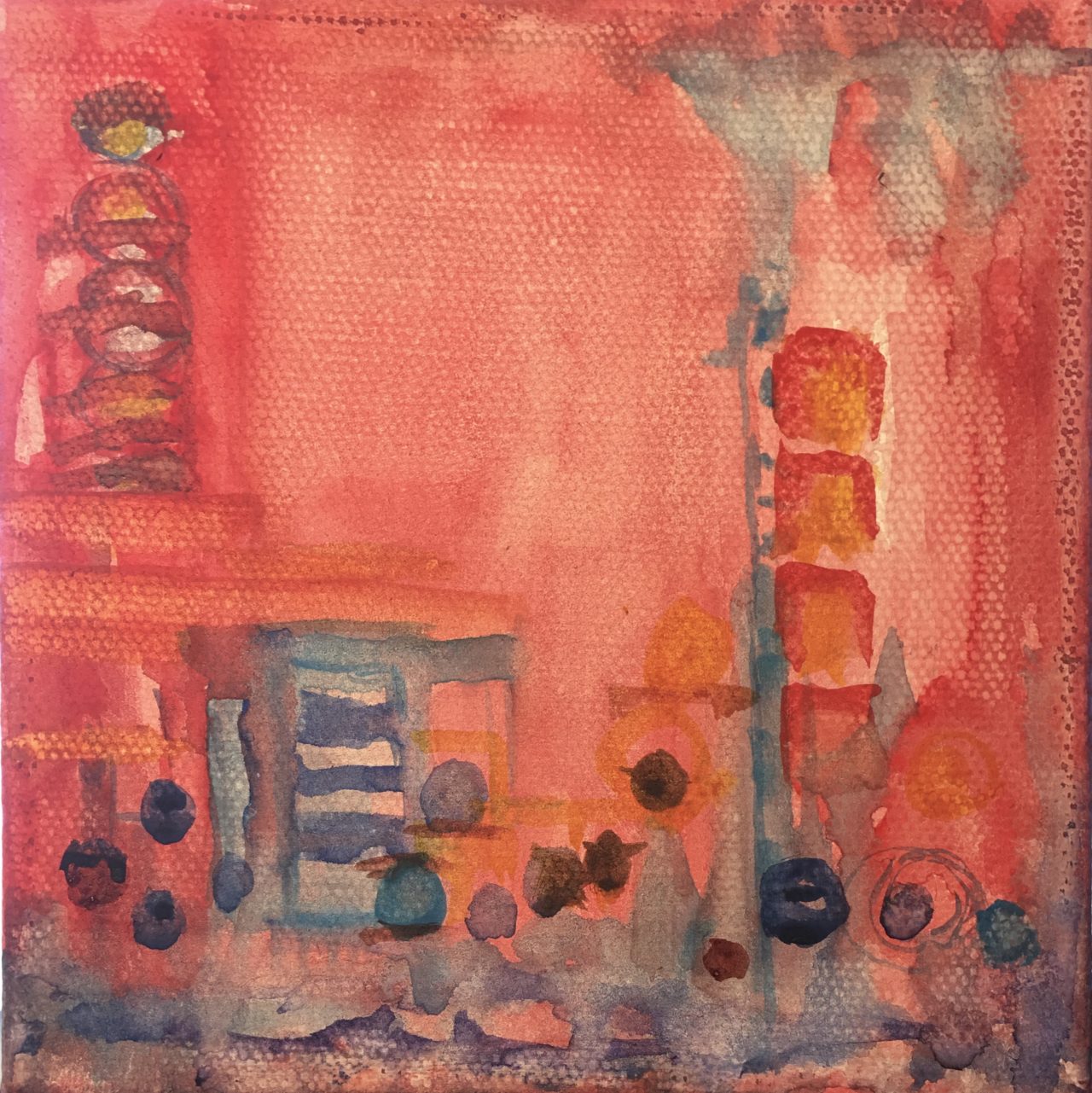
Since that first class, Yates has coped with the heaviness of the subject matter by continuing to paint. She’s not, however, attempting to create images of specific events addressed in the class. “The imagery of situations described in the class is so heavy that I’m afraid it would distress my soul to paint re-creations. Those aren’t things that I could put on canvas and live with.” Instead, Yates says, “I paint a feeling. I try to pull up great compassion and express it as snow or aspens, or shadows.”
“Did you notice anything when you moved to the Methow Valley?” Yates continues. “It’s largely white. This is why I took a particular interest in Bill’s class. I knew from taking his other classes that he would have a sensitive approach.”
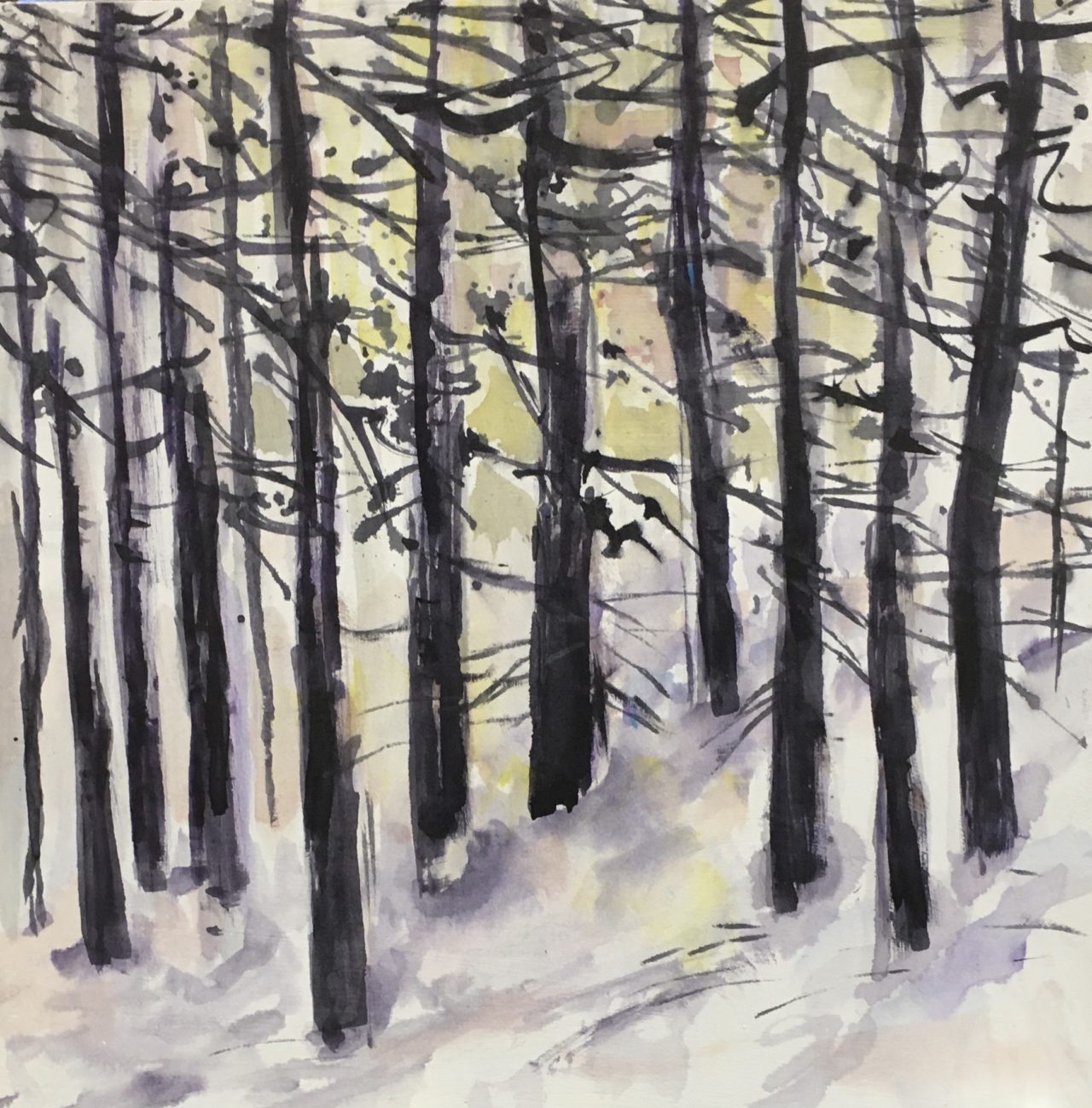
“Everything is so powerful,” Yates says of the class. “It’s a challenge in emotions. There are these horrors, and then there are these joys, like listening to music created by Black musicians.”
Yates refers to the class watching Jimi Hendrix’s version of “The Star Spangled Banner” at Woodstock in 1969. “It’s been years since I watched that,” she says. “That was my era. Now here I am painting and being blown away by it.”
Yates adds, “As I’m watching Jimi Hendrix play, I’m thinking about others taking the class, others who were from that era too. And we’re all so straight now.”
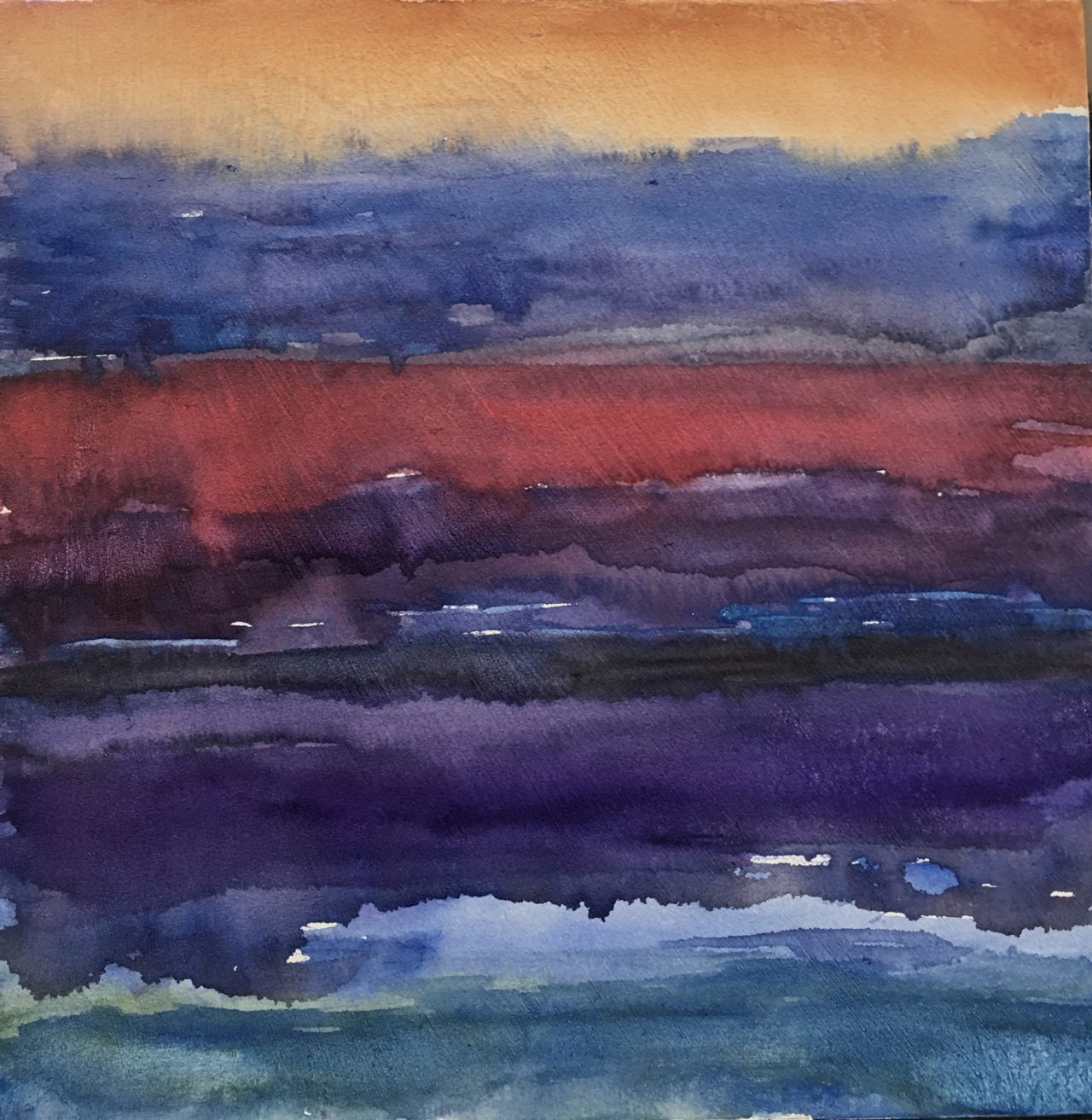
Yates isn’t sure what she’ll do with the paintings she’s creating during Hottell’s 10-week class; some may end up at the Winthrop Gallery, the cooperative gallery where Yates is an artist member. But showing the work isn’t the point—digesting the class’s material is.
For those who might like to try Yates’ strategy of learning while drawing, Yates suggests just “putting pencil to paper and let it flow while you listen.”
“Everybody has art in them,” Yates says. “Grab a crayon, play around on paper. See if you can hear better.”